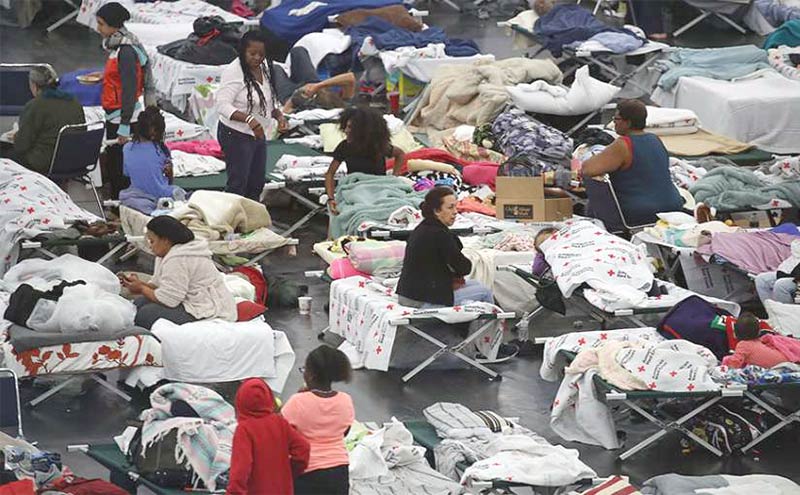
Disasters Within the COVID-19 Disaster
Since the inception of the SARS-CoV2 disaster, Emergency Medicine physicians have been responding to the disaster with unprecedented dedication. Emergency Medicine professionals have also learned to navigate the “disasters within the COVID-19 disaster”. This was first evidenced by Emergency Medicine physicians having to deal with their own personal disasters caused by the pandemic. From the beginning, EM physicians were tasked with taking care of the giant wave of ill patients for which there was no known treatment or cure. Physicians went to work physically and emotionally tired, not only caring for the masses but also passing on clinical knowledge that we could all benefit from. Frontline workers have washed, scrubbed, sanitized, and social distanced, trying to not to infect any of their loved ones. The personal disasters did not stop with trying to avoid contracting the virus. As of this writing, I, like many other Emergency professionals, have gotten ill from COVID-19. Despite using every preventive measure, SARS-CoV2 has still managed to creep its way into my personal life. I am trying to “will myself” to be well enough to do many things including complete this article. In one fell swoop, COVID-19 took out one of the Emergency Medicine staff, a search and rescue responder, a family bread winner, and a major caregiver to elderly parents who are also now infected with COVID-19. These “internal disasters” are not uncommon dilemmas facing our nation’s healthcare professionals.
While many healthcare providers have been overwhelmed with patients, in other parts of the nation, declines in hospital visits and routine care have led other organizations to cut physician hours creating financial disasters for individuals and groups. Physicians have responded by becoming creative in the delivery of care. They have embraced the use of virtual platforms, drive through testing, and alternate care sites to bring care to their communities.
The long and short-term mental health toll on both healthcare workers and citizens has also become painfully obvious. The many stressors of the pandemic on frontline workers has resulted in mental and emotional fatigue. This includes one of ACEP’s own standouts, Dr. Lorna Breen whose suicide brought to light the need for drastic mental health care reform for healthcare workers. Increased stressors such as social distancing resulting in separation from social support systems, financial losses, and perceived or actual limitations in accessing mental health services has led to increased risk of anxiety, depression, and suicide in the public as well 1,2. Loved ones in long-term care facilities have had limited contact with family also resulting in unfavorable mental health consequences in the elderly population.
Now that hurricane and wildfire seasons have struck, another wave of disasters encompassing the COVID-19 pandemic has occurred. According to NPR.com, the California wildfires have burned a record 4 million acres seriously affecting air quality.3 The CDC website warns that individuals with COVID-19 are at increased risk of adverse health effects from wildfire smoke.4 Finding respite in clean air locations can be challenging while social distancing. Rescuers have had to consider ways to keep both first responders and victims of natural disasters safe during search and rescue operations. Special arrangements for first responder screening, travel, sleep, and additional PPE use specific to COVID-19 must all be considered in planning disaster response. Some teams have experienced staffing shortages due to the pandemic limiting their capabilities. Any hospital emergency preparation and evacuation planning must take into consideration the natural disaster and the Coronavirus pandemic.
In summary, Emergency Medicine physicians have adapted to the many disasters within the COVID-19 disaster. Personal, professional, financial, mental health, and natural disasters have all become facets of the COVID-19 disaster. Emergency physicians across this country have risen to the challenges and while we are strong, we are not invincible. We cannot be a safety net for others if we do not take care of ourselves. I encourage my colleagues to reach out to a compassionate co-worker, a trusted mentor, or a mental health professional for support if the burden becomes too great. In addition, The ACEP Wellness and Assistance Program is available for ACEP members and offers free counseling or wellness sessions. Help is also available at the National Suicide Prevention Lifeline 1-800-273-TALK (8255).
- Simon NM, Saxe GN, Marmar CR. Mental Health Disorders Related to COVID-19–Related Deaths. JAMA.Published online October 12, 2020. doi:10.1001/jama.2020.19632
- Czeisler MÉ , Lane RI, Petrosky E, et al. Mental Health, Substance Use, and Suicidal Ideation During the COVID-19 Pandemic — United States, June 24–30, 2020. MMWR Morb Mortal Wkly Rep 2020;69:1049–1057. DOI: Learn More.
- 4 Million Acres Have Burned In California. Why That's The Wrong Number To Focus On
- Wildfire Smoke and COVID-19
Lillian Lockwood, MD, FACEP


